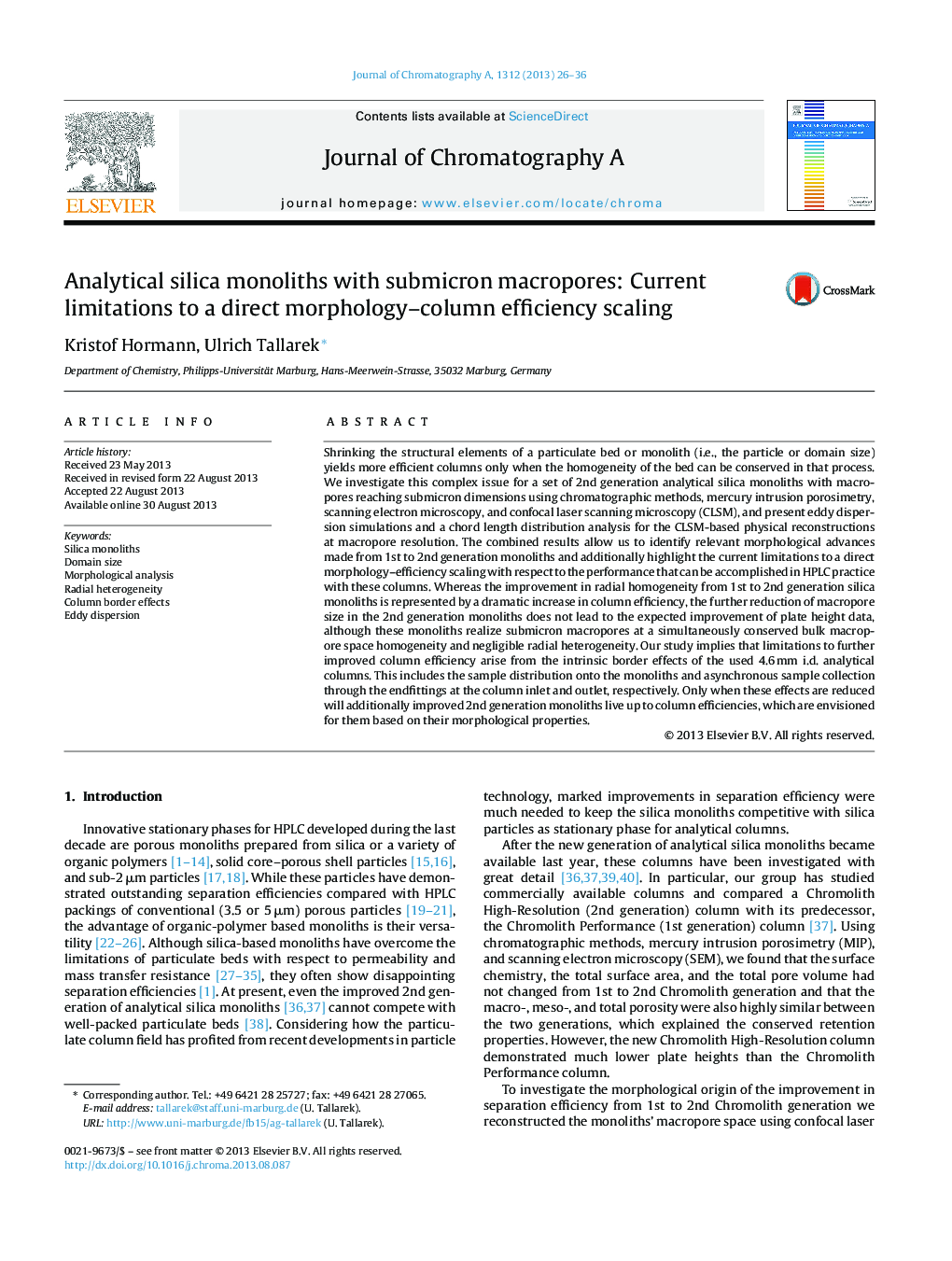| کد مقاله | کد نشریه | سال انتشار | مقاله انگلیسی | نسخه تمام متن |
|---|---|---|---|---|
| 1203579 | 1493614 | 2013 | 11 صفحه PDF | دانلود رایگان |

• Second generation analytical silica monoliths with varied macropore size are analyzed.
• Macromorphology is reconstructed using confocal laser scanning microscopy.
• Submicron macropore size is realized at conserved macropore space homogeneity.
• Elimination of radial heterogeneity is key to improved separation efficiency.
• Column border effects obscure morphological improvements in chromatographic practice.
Shrinking the structural elements of a particulate bed or monolith (i.e., the particle or domain size) yields more efficient columns only when the homogeneity of the bed can be conserved in that process. We investigate this complex issue for a set of 2nd generation analytical silica monoliths with macropores reaching submicron dimensions using chromatographic methods, mercury intrusion porosimetry, scanning electron microscopy, and confocal laser scanning microscopy (CLSM), and present eddy dispersion simulations and a chord length distribution analysis for the CLSM-based physical reconstructions at macropore resolution. The combined results allow us to identify relevant morphological advances made from 1st to 2nd generation monoliths and additionally highlight the current limitations to a direct morphology–efficiency scaling with respect to the performance that can be accomplished in HPLC practice with these columns. Whereas the improvement in radial homogeneity from 1st to 2nd generation silica monoliths is represented by a dramatic increase in column efficiency, the further reduction of macropore size in the 2nd generation monoliths does not lead to the expected improvement of plate height data, although these monoliths realize submicron macropores at a simultaneously conserved bulk macropore space homogeneity and negligible radial heterogeneity. Our study implies that limitations to further improved column efficiency arise from the intrinsic border effects of the used 4.6 mm i.d. analytical columns. This includes the sample distribution onto the monoliths and asynchronous sample collection through the endfittings at the column inlet and outlet, respectively. Only when these effects are reduced will additionally improved 2nd generation monoliths live up to column efficiencies, which are envisioned for them based on their morphological properties.
Journal: Journal of Chromatography A - Volume 1312, 18 October 2013, Pages 26–36